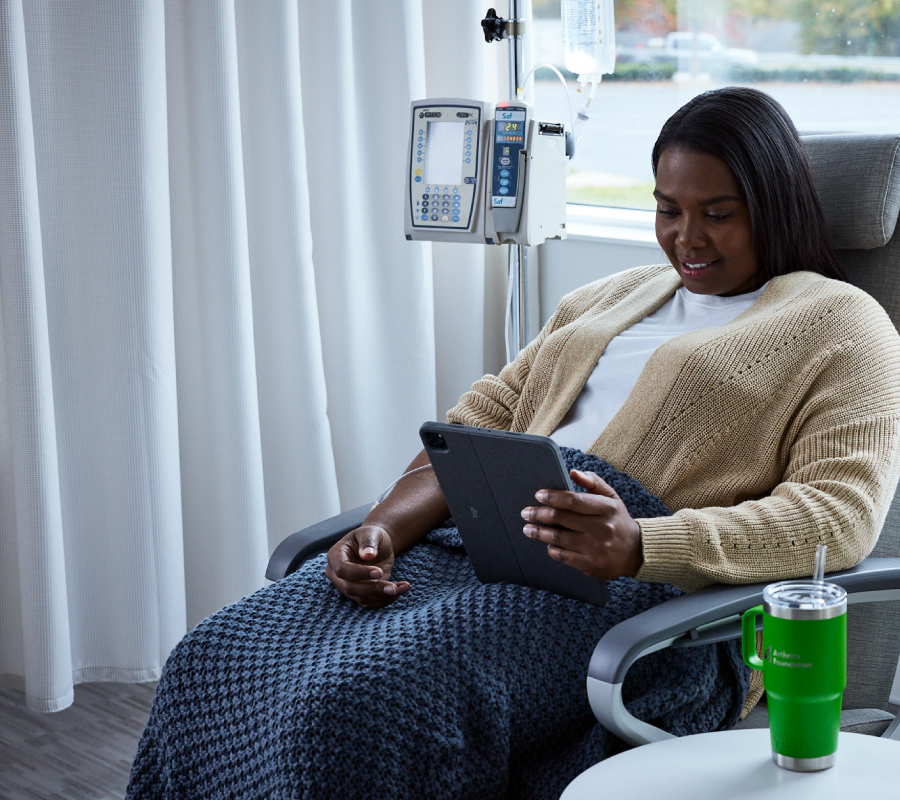When Back Pain May Mean Arthritis
Many forms of arthritis and related conditions can cause back pain, stiffness and swelling.
About 80% of back pain is acute and usually lasts one to seven days. Otherwise, it’s considered chronic and may be caused by arthritis. The lower back is the most common site of arthritis back pain. Several types of arthritis are part of a group of conditions called spondylarthropathies (meaning spinal arthritis). Spondylarthropathies can affect adults and children.
If you are experiencing pain, swelling and stiffness in the back, you may have one of the following types of arthritis or related conditions.
Axial Spondyloarthritis
Axial spondyloarthritis (axSpA) is a chronic inflammatory disease that primarily affects hip joints and the joint that connects the bone at the bottom of the spine to the pelvis (sacroiliac joint).
There are two types of axSpA: Radiographic axSpA (also called ankylosing spondylitis or AS) includes damage to the sacroiliac joints and spine that can be seen on X-rays, and nonradiographic axSpA (nr-axSpA) does not include damage you can see on X-rays but it may show up on magnetic resonance images (MRIs).
Osteoarthritis
Osteoarthritis (OA) is the most common form of arthritis. Previously known as “wear and tear” arthritis, OA is a progressive disease of the joint. It leads to breakdown of the cartilage, which cushions the ends of the bones where they meet to form joints. Eventually the bones may begin to rub together, causing stiffness, pain and loss of joint movement. In spine OA, the loss of cartilage affects the facet joints, where the vertebrae join. As a result, movement of the bones can cause irritation, further damage and the formation of bony growths called spurs. These bone spurs can press on nerves, causing pain.
Psoriatic Arthritis
Psoriatic arthritis is a form of arthritis that affects joints and usually the skin (psoriasis). For about 20% of people with PsA, the disease involves the spine (axial arthritis). In some cases, bony overgrowth can cause two or more vertebrae to grow together (fuse), causing stiffness.
Reactive Arthritis
Reactive arthritis often occurs after the genital, urinary or gastrointestinal system gets infected. This condition may cause inflammation of the joints, eyes as well the intestines, kidneys or bladder. The sacroiliac joint can be affected.
Enteropathic Arthritis
This form of arthritis occurs in about 5% of people with inflammatory bowel disease, which includes ulcerative colitis and Crohn's disease. It commonly affects the sacroiliac joint causing lower back pain.
Spinal Stenosis
Spinal stenosis is caused by bony overgrowth of the vertebrae and thickening of the ligaments. It tends to occur along with osteoarthritis or ankylosing spondylitis. The overgrowth can cause the spinal column to narrow and press on its nerves. Because the affected nerves have many functions, the condition may cause many lower body problems, including back pain, pain or numbness in the legs and bowel problems.
Other arthritis-related conditions that may cause back pain include polymyalgia rheumatica (PMR), fibromyalgia and Paget’s Bone Disease.
Getting a Proper Diagnosis
Other common sources of back pain include muscle spasms, muscle fracture, abnormal curving of the spine (scoliosis), an inflamed sciatic nerve (the largest nerve in the body that runs from the lower part of the spinal cord through the buttock and down the back of the leg) or an injury to a disk (shock absorber) in the back.
Arthritis is difficult to self-diagnose. Talk with your primary care doctor as soon as possible about your symptoms. You may be referred to a rheumatologist or orthopedist to get an accurate diagnosis so you can get the medical care you need. Left undiagnosed and untreated, your condition may worsen and cause disability.

Stay in the Know. Live in the Yes.
Get involved with the arthritis community. Tell us a little about yourself and, based on your interests, you’ll receive emails packed with the latest information and resources to live your best life and connect with others.


